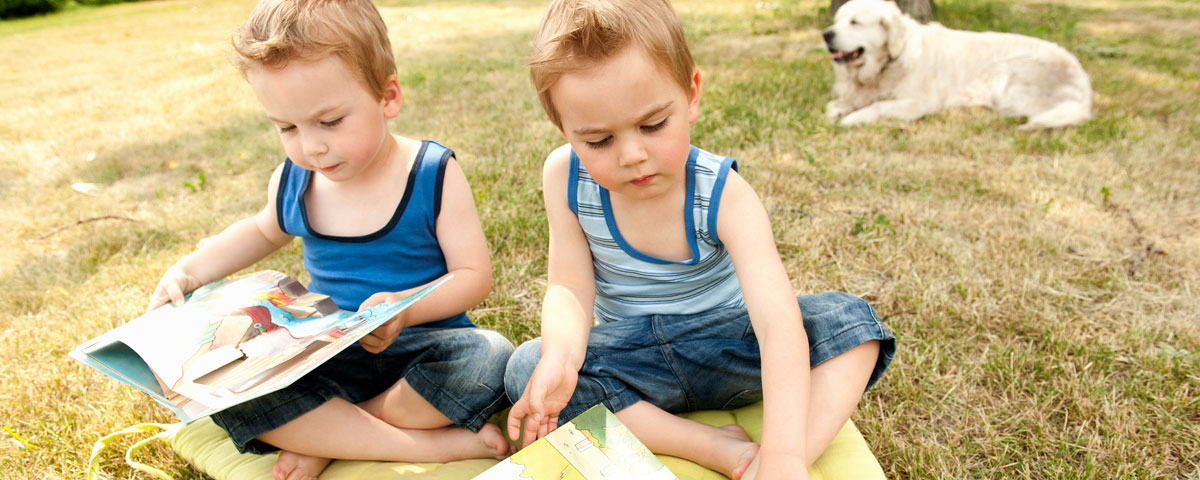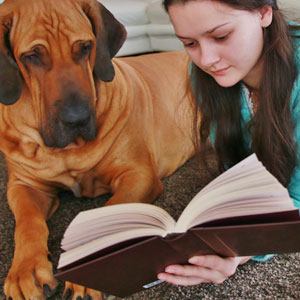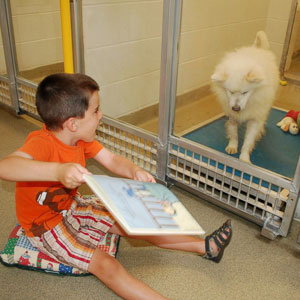
The Wag of The Tale
There’s nothing that a good pat on the head can’t help, particularly if you’re an anxious kid who needs a little reassurance. Man’s best friend, or in this case, kid’s best friend can also help an anxious child by lending an empathetic ear. Throughout the U.S. (and the world) dogs are helping children reduce anxiety and feel empowered through one-on-one reading sessions. In each reading scenario, it’s difficult to pinpoint exactly who is helping who, and this may be exactly the point.
Dogs Are Like a Magic Elixir
At TDI (Therapy Dogs International), children read to dogs in a relaxed and “dog-friendly” atmosphere which allows children to practice their reading skills. Through TDI’s program called, Tail Waggin’ Tutors certified therapy dogs are brought to organizations, schools or institutions by their handlers. Children who have previously displayed difficulties in reading, and performing in classrooms, or have self-esteem issues, are selected for the TDI program. These children are usually self-conscious when reading aloud in front of their classmates. The children and dogs are then matched and set in a peaceful environment such as a library or quiet park setting is good.
When a child sits down next to the calm dog, opens a book and reads to the attentive dog, all anxiety, and preconceived notions subside. Often, during reading sessions, the therapy dog handler will speak through the dog to encourage the young readers. A handler might use phrases like, “Sam doesn’t understand what is happening on this page, could you help him out?” This encourages the child to become the teacher and help the dog. Playing the role of the teacher is a natural confidence builder for children.

When children read to dogs, anxiety fades away.
The interplay between the attentive dog and child works like a magic elixir. As the reading session progresses, children relax and focus on the fun of reading out loud to an audience. Eventually their reading skills improve. The children also build their self-esteem and associate reading as a positive and pleasant experience.
The R.E.A.D program, launched in 1999 in Utah, was the first comprehensive literacy program built around the concept of children and young adolescents reading to dogs. Since it’s inception nearly 20 years ago, the Reading Education Assistance Dogs program’s techniques have been brought into the mainstream and adopted by child learning advocates around the world.
Australia has a program based on R.E.A.D called, Story Dogs – the Story Dogs founders advocate reading to dogs for children and say that “Learning to read is often less about intellectual limitation than about overcoming fears.”
A New Twist in the Tale
Children reading to dogs has a new twist to the tale. You can file this one under, “Who rescued who?” JoEllyn Klepacki, the assistant director of education at the Missouri Humane Society has started a program called, Shelter Buddies Reading Program. The program is designed for children to read to anxious or withdrawn shelter dogs at the humane center.
“We wanted to help our shy and fearful dogs without forcing physical interaction with them to see the positive effect that could have on them,” says program director Klepacki. “We launched the program last Christmas, and now we offer it once a month.” It has the same basic impetus as the R.E.A.D program, overcoming fear. But, it starts with kids wanting to help dogs.
Children ages 6 to 15 can sign up for the Shelter Buddies online. Once signed up, the kids are trained by shelter dog experts on how to read dog body language so they can gauge if the dog is stressed or anxious. These anxious shelter dogs are the ones most in need of special attention from humans. The young volunteers select a shelter dog and then sit down in front of the shy dog’s kennel with a book and read to them. “Ideally that shy and fearful dog will approach and show interest. If so, the kids reenforce that behavior by tossing them a treat,” says Klepacki. This small act of kindness encourages the positive behavior and the dog now associates treats with humans voices and human interaction.
Eventually, the dogs become more comfortable around strangers and see that there is nothing to fear. The dogs are then more apt to approach the front gate of the kennel and interact with potential adopters – making it more likely for the dogs to be adopted. In return the children improve their reading skills, bolster self confidence, and give back to the community. All the while the kids are doing something that makes them happy and it’s good for the tale.






